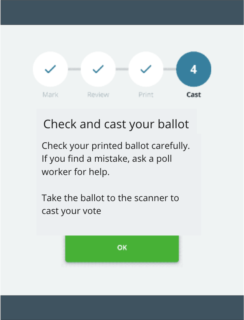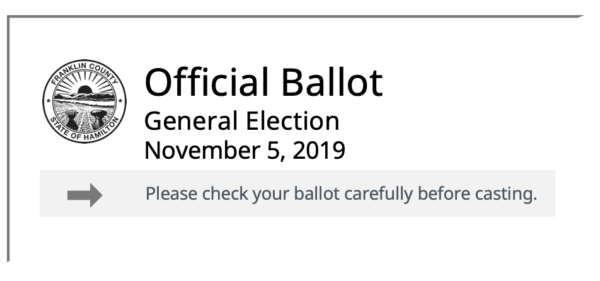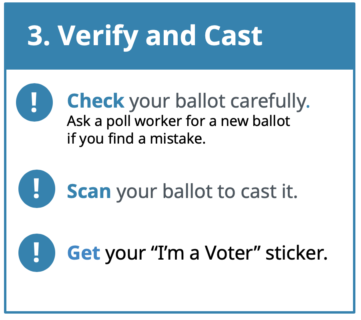Ensuring that voters verify their ballot needs a holistic approach
How do we make sure that every ballot is cast as the voter intends?
For the past few years, our ballot design projects have focused on ballot marking devices. These voting systems have an accessible electronic interface for making and reviewing selections, and then print a paper ballot for the voter to cast.
We’ve been interested in whether voters will check their ballots carefully, what motivates them, and what design elements help them do so accurately. We have worked on voting system designs, observed elections, pored over demos of all the new commercial systems, and conducted research on the voting process. We have also thought hard about the need for voting systems that are both secure and accessible for voters with disabilities and historically disadvantaged voters.
Based on our research, voters need:
- A voting system that helps voters avoid mistakes. The system confirms voters’ choices as they make them. And then, again, voters have a chance to check all of their choices on a review screen. The voting system keeps them from overvoting. It gently warns them if they have skipped a contest. It helps them understand the voting rules for each contest.
- A printed ballot that voters can check – verify – before they cast it. One with big enough text (at least 10 points, but 11 points would be better). The ballot layout makes it possible for people with disabilities to use their personal assistive technology to scan the ballot and have it read back to them.
- Instructions that tell voters to check the paper ballot before they cast it. This is their last chance to verify that their ballot has everything they voted for, and only that. Voters can do their part for election integrity by checking one more time.
To make verification a normal part of voting, something everyone does, reminders need to be woven into the entire voter experience.
Imagine a coordinated effort in the polling place. Something like this.
At the check-in table, you’ve signed in and you are ready to vote. Before you head to the voting booth, an election worker says:
“You’ll vote on one of the systems over there. After your ballot prints out, don’t forget to check it carefully. If you see something wrong, you can get a replacement. Then, take it to the scanner to cast it.”
You work your way through the ballot, marking your choices. Then, on the last screen, the ballot marking device tells you again to check your ballot before casting it. Something like:

When you look at the printed ballot, right at the top, it reinforces the importance of checking that the ballot reflects your choices, like this:

Finally, you cross the room to the scanner or ballot box. Before you cast your ballot, right in front of you, there’s a sign with a final reminder:

Voters try to follow instructions. Let’s give them good ones that help ensure that their ballots are cast as they intended.
The illustrations are inspired by work by Oxide Design Co, Suzanne Chapman, the EAC’s best practices for voter information materials, and our colleagues and collaborators on many projects.

